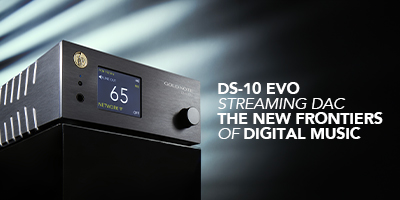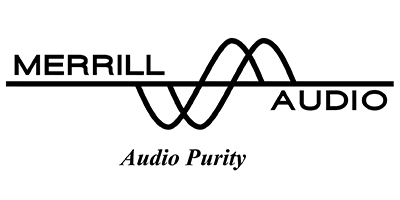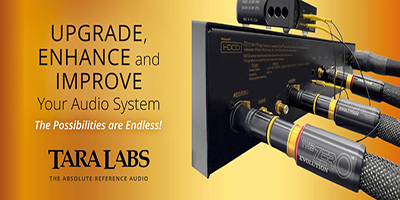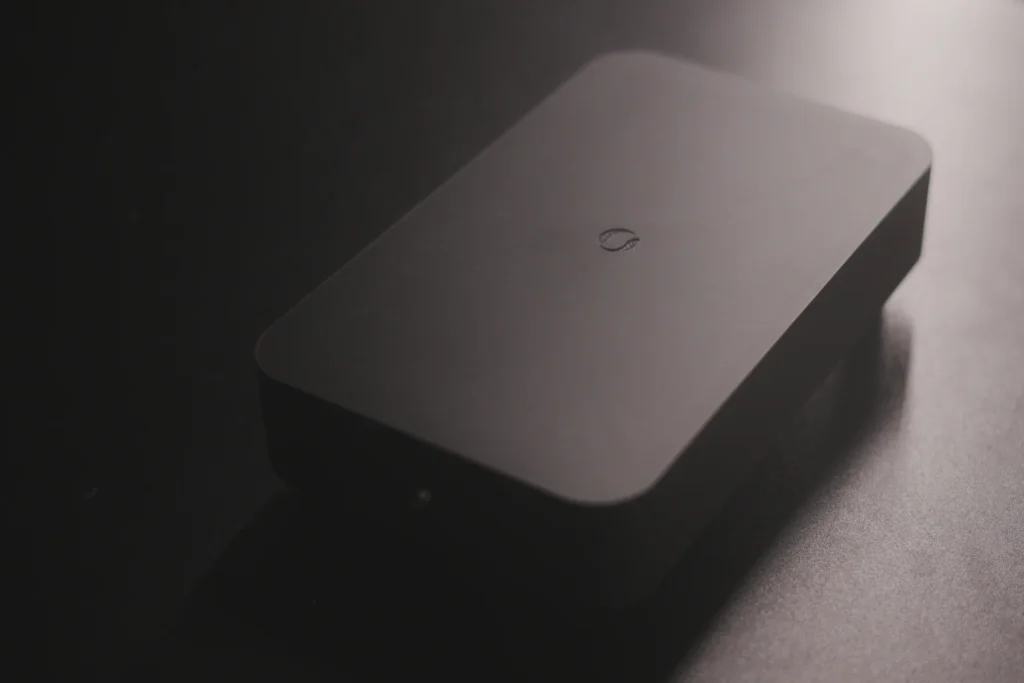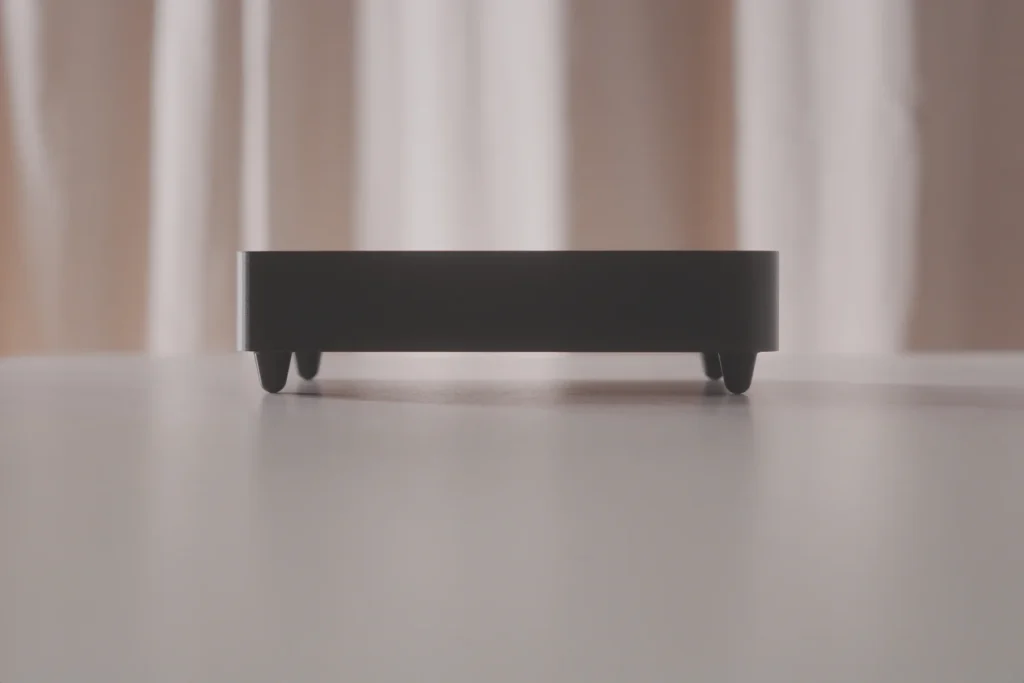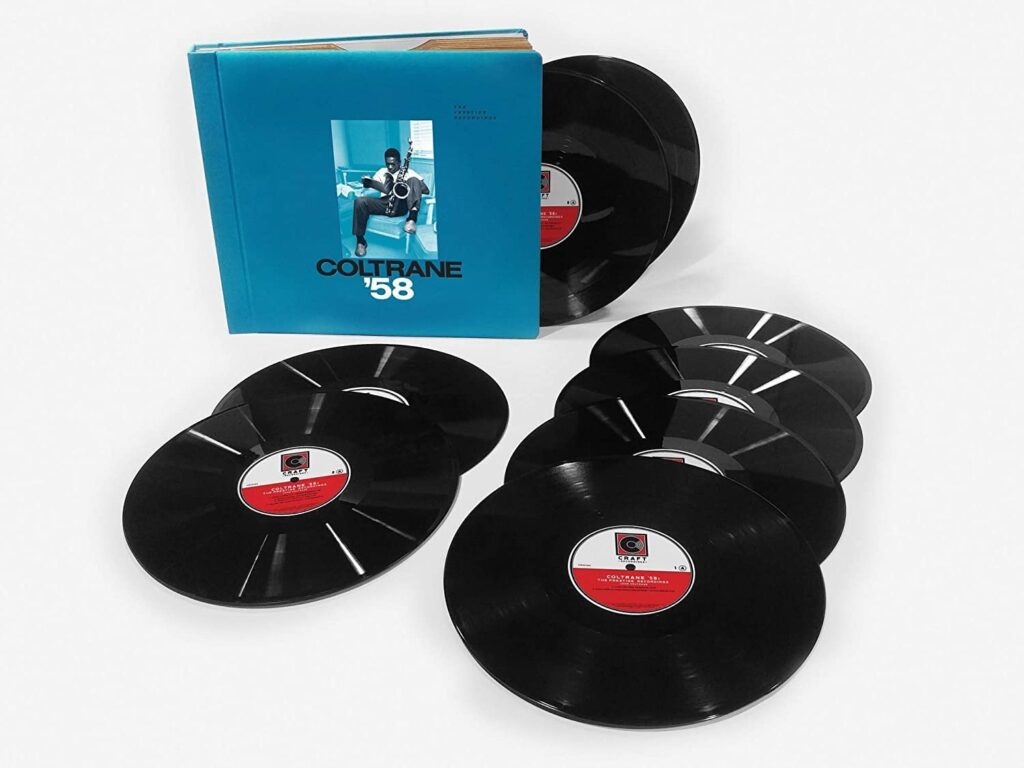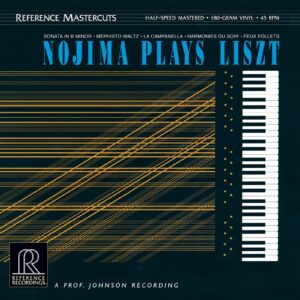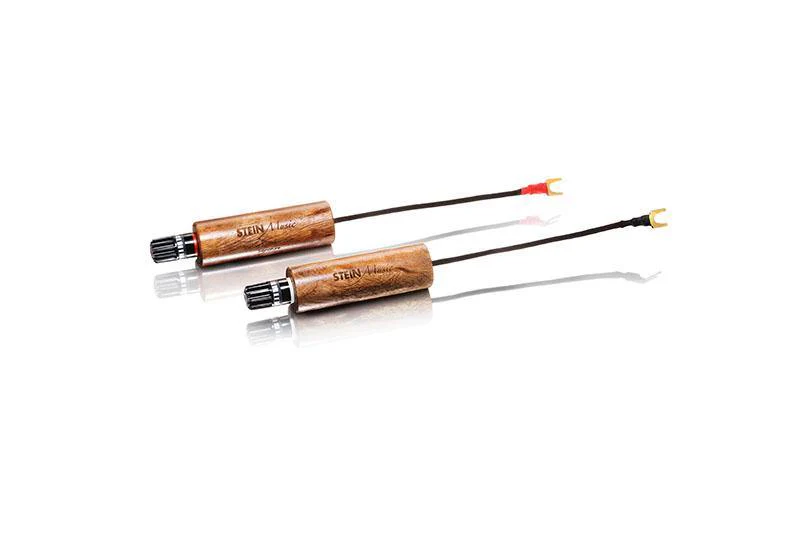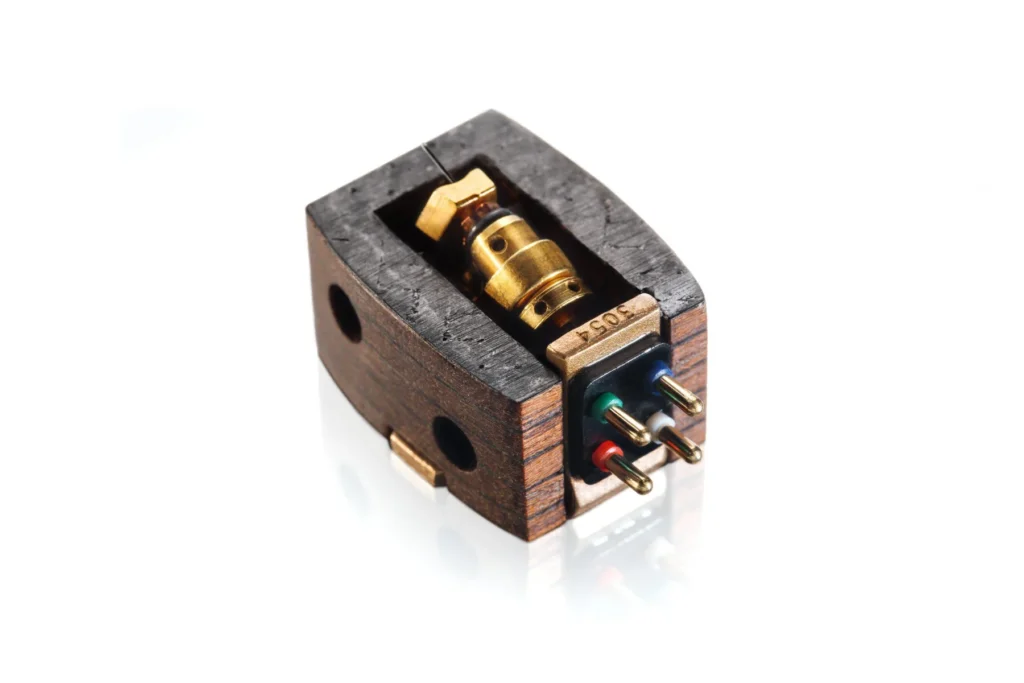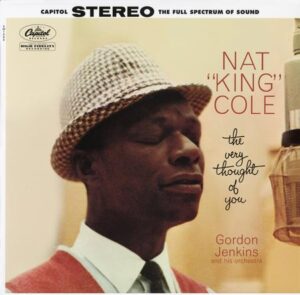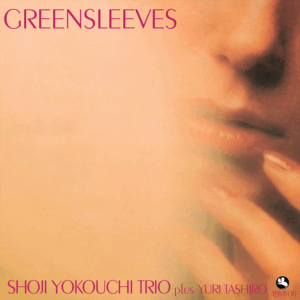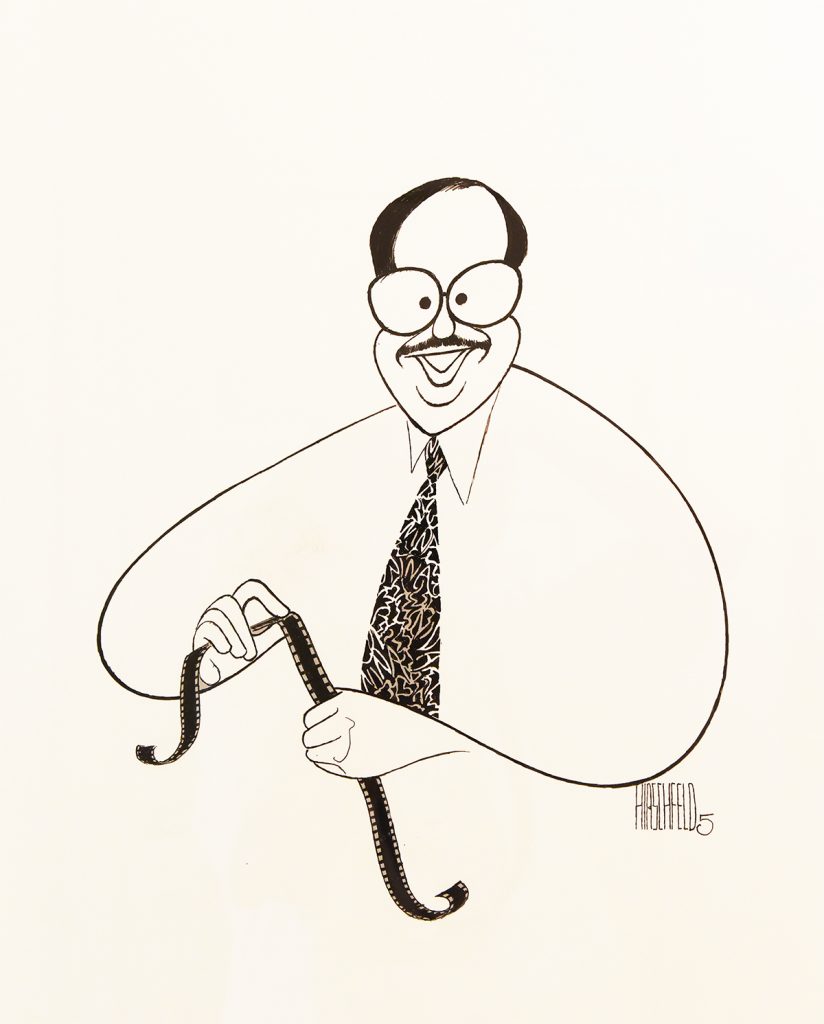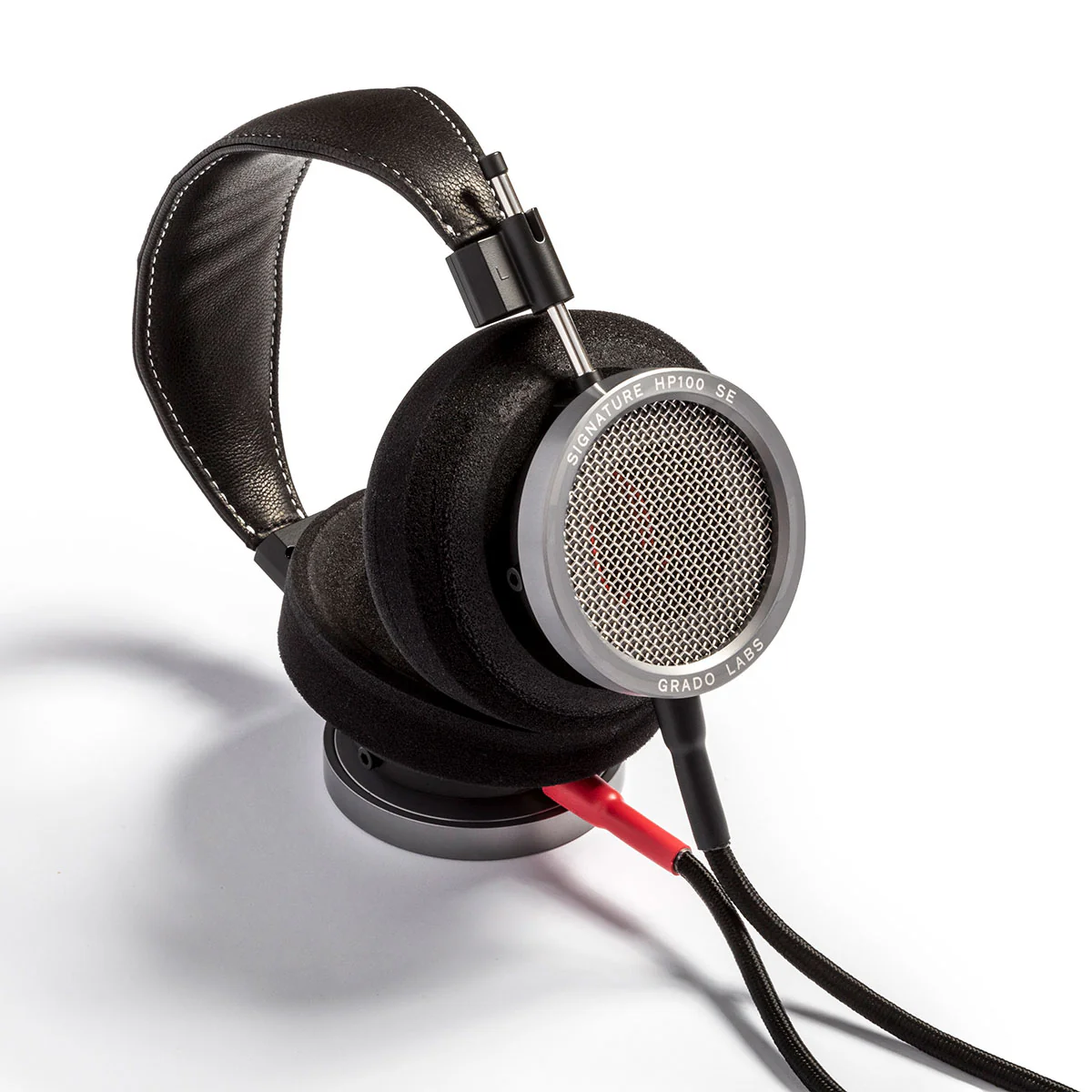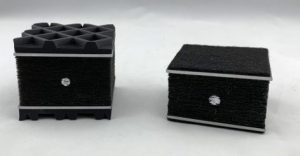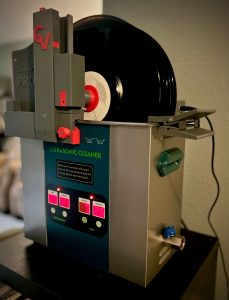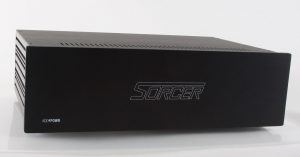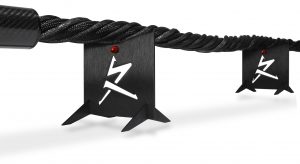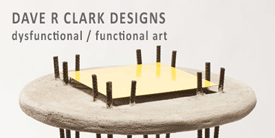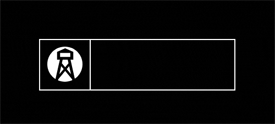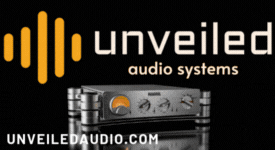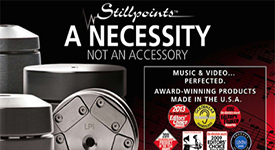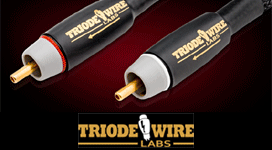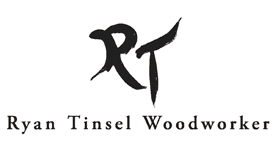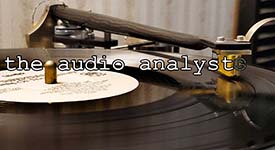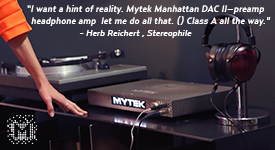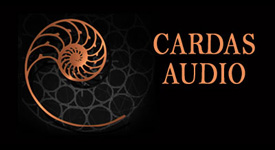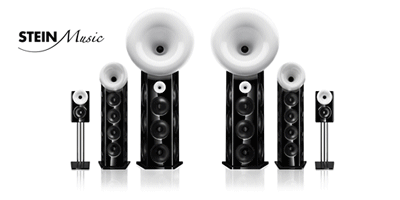Bob Levi, a portrait. (Photograph and image processing by David W. Robinson)
I am delighted to have the first opportunity to experience the perfected Schumann Generator S1 and the Inline Speaker Signature Silver for the first time in America. They are both exquisitely finished products and enhance the listening experience in vastly different ways.
From SteinMusic: Why a Schumann Generator?
When we first explored the influence of Schumann waves on live and reproduced music, we built numerous types of generators using different waveforms. Each sounded different—so we selected our preferred generator design based on two essential criteria:
- Absolute temperature and long-term stability
- Outstanding performance in extended listening sessions
Every part of this circuit—and every component—was chosen with the utmost care. Over 40 years of experience in high-end electronics development helped us tremendously, as we found the same principles apply as when designing a state-of-the-art preamplifier.
Analog Circuitry—Built Like the Best Audio Equipment
- Linear power supply with high power reserves
- External mains transformer to eliminate 50/60Hz magnetic interference
- Selected fast, low-noise rectifier diodes
- Discrete voltage regulation—no off-the-shelf stabilizers
- Fully balanced, high-current discrete driver stage—worthy of any top-tier amplifier
- Gold-plated, double-sided circuit board with through-hole plating
What Makes the SteinMusic S1 Schumann Generator So Unique?
- Pure low-distortion sine wave, We chose the sine wave for its natural quality—unlike square waves, which are easier to generate but far less refined.
- Precisely tuned frequency, Each unit is carefully calibrated to exactly 7.83Hz.
- Individually optimized for lowest distortion, Fine-tuned for optimal signal purity.
- Discrete generator circuit, no integrated ICs, For uncompromising quality and stability.
- Premium-grade components, Ensuring consistent frequency output over time.
- Exceptional temperature stability, From –20°C to +60°C without frequency drift.
- Custom-designed internal antenna, Engineered for optimal in-room performance.
Extendable with External Antennas
In addition to the integrated bifilar antenna, two 3.5 mm jack outputs allow you to connect external throw antennas—unlocking the full potential of this technology.
Recommended Placement for Optimal Results
- Place the S1 in the center of the front wall, between your loudspeakers, at a height of 1 meter or more.
- Plug the two included throw antennas into the 3.5 mm jacks – Extend one to the right and one to the left.
- Changing the vertical position of the antennas will affect results—we prefer a higher placement.
For full effect, consider placing a second S1 symmetrically on the rear wall of your room.
"The heartbeat of the earth."
– Holger Stein.
Holger Stein, a poartrait, Orange County, CA, 2018 (photograph and image processing by David W. Robinson)
Listening Impressions
The Schumann S1 Generator amplifies the 7.83Hz generated by the earth's natural electromagnetic field and focuses that signal into the listening room. With four audiophiles, including myself, to listen, we first tested the S1 without the extended antennas. Utilizing a 24/192kHz Qobuz stream, each heard small increases in definition at all frequencies. No tonal shifts were detected. This device is not a room correction accessory, but a music enhancement device.
We then connected the thin external black antennas to the box and stretched them across the room. For reasons beyond any of our logical reasoning, all four audiophiles weighed in with improvements to the recording. One of the audiophiles, who is a noted psychiatrist, stated that "if" this was a placebo-affect, all four audiophiles present would not have had similar judgements.
I specifically heard greater depth, a more refined sound stage, and a clarity unmatched by the system with the S1 turned off. This theme of added complexity seems to be consistent with every recording from every source we tried. The best news is that the S1 did not cause any lumps or bumps to the frequency response of any of the instruments like many other enhancements do.
Schumann S1 Generator in large reference system room: Digital and Vinyl
Utilizing The Tchaikovsky piano Concerto no 1. with Van Cliburn, RCA, DSD64, with the Schumann S1 active, piano was beautifully centered and well-focused. It was texturally full and extremely realistic. The soundstage is wall to wall and ceiling to floor, extending back beyond the rear wall. The background is jet black with a very natural depth to instruments in the rear of the orchestra.
Now with the Schumann S1 off, the piano became less tightly focused and a bit blurry and fuzzy. All other instruments seem to be less focused as well. The piano sounds slightly less bright and thicker tonally, and solo instruments became harder to find within the orchestra. The presentation was definitely more homogenized. The soundstage is still quite wide but not as deep while the entire presentation is less transparent and organized.
The Coltrane '58 LP set using the new Archon moving coil cartridge from Acoustic Systems of Germany, with the Schumann S1 on, the Coltrane recording has a realism that is absolutely stunning. I heard rock solid imaging, extraordinary spatial ques, and loads of textural information that enhance the sense of realism. Dynamics are outstanding, the stage is clearly evident, and there is virtually no sweetening added to this recording. The double bass is clear and natural while the speakers do not appear to be part of the presentation. Coloration is nil.
With the Schumann S1 off, the trumpet appears a bit bigger and less focused. There is less of a wood quality in the double bass such that it's lower notes appeared to thud rather than ring. The piano is less focused while the drum kit has less definition. Coltrane's sax sounds less alive and realistic.
Listening to Reference Recordings 45 RPM Nojima Plays Liszt, Schumann S1 on, the notes ring with bell like precision. The piano fills the space between the speakers extending back beyond the rear wall. You can clearly hear the richness of the piano soundboard, no smear is evident, but no hard edges are evident either. Precision and pure reality unfold in the large listening room.
With the Schumann off the piano notes are suddenly softer with less focus. The piano playing becomes more blended and homogenized. Depth is reduced and the recording becomes somewhat more ordinary. Fascinating.
Summary of Schumann Generator S1
With the antenna wires extended and the S1 box placed about a meter high and centered behind the main speakers, once turned on it will likely never be turned off. Producing only sonic benefits with no downside whatsoever, the Schumann S1 is a triumph for Holger Stein and SteinMusic. Everyone who heard its effects liked it; I am shocked and flabbergasted by its contribution to my beloved music. I recommend investing in the SteinMusic Schumann Generator S1 to every Audiophile who wants the very best out of their systems.
"SteinMusic Inline Speaker Signature Silver: From SteinMusic
The InLine Signature Silver Series:
In addition to the previously described technology, the InLine Signature Series uses a quantum physical approach that affects the signal flow. This technology creates a force field that affects the polarity of all electrons and protons in the field, aligning them more closely with each other and affecting their oscillation. This reaction streamlines and enhances the transfer of electrons between atoms. The result is stunningly enhanced audio or video signal purity and energy.
What does the InLine Speaker Signature Silver Do?
As soon as music flows through a speaker cable, electromagnetic fields are generated. These can cause high-frequency distortions via back-induction, negatively impacting resolution, clarity, and spatial imaging.
The Inline Speaker Signature by SteinMusic neutralizes these effects using a chaotically twisted internal structure within a matrix of ultra-pure silver. The resulting field lines overlap in such a way that their physical influence cancels out—with no active components or external power required.
The result:
- Enhanced precision and detail resolution
- Airier, clearer highs
- More accurate spatial imaging
- Clean, undistorted sound
Sound Characteristics of the Silver Version
The Silver version is defined by its transparent, precise sonic character. It opens up the top end and emphasizes fine detail – ideal for listeners who seek maximum resolution and a clear, vibrant presentation.
Product Details
- Type: Inline element for EMF suppression in speaker cables
- Material: Ultra-pure silver (signal-conducting matrix)
- Function: Passive, electromagnetic neutralization through chaotic field vector cancellation
- Application: Inserted between speaker cable and loudspeaker
- Contents: 1 pair (2 pieces)"
Listening Impressions
We inserted the SteinMusic Inline Speaker Signature Silver between the AudioQuest Dragon Speaker Cables and the Martin Single wire Duke II Speakers in my near Field Reference System. Our first test was with my McIntosh MR71 tube tuner fully tweaked and restored. With the signatures in place the sound stage became deeper, there was more air around the instruments, with enhanced musical textures. The performance sounded less compressed while dynamics improved.
Without the signatures the system sounded more "HiFi" and more ordinary. The soundstage shrank, and the performance was a bit compressed. Overall, the system was improved by the signatures in ways that made the music more realistic and alive.
Next, we again listened to the Reference Recordings of Nojima Plays Liszt utilizing the Stein Music Aventurin MC phono Cartridge, EAR PB88 Tube Phono stage and EAR V12 integrated amplifier with the SteinMusic InLine Speaker Signature Silvers. I was shocked by the magical and airy sound akin to sitting next to the piano. I heard spatial ques I have not heard before and the focus of the piano notes was excellent. It was hard to believe the SteinMusic InLine Speaker Signature Silvers would compliment such fine speaker cables.
Without the Signatures, the LP lost the sense of soundstage and became more of a closely mic'd recording. I also noted some fuzziness to the piano notes. Where the base was really tight and solid with the signatures, it was now less impactful. A piece of good news here, I did not detect any shifts in frequency response whatsoever.
Next, I listened to an Original Mercury Living Presence LP, Country Gardens, Eastman Orchestra. With the signatures I Heard spatial ques and lovely depth I had not heard before. The entire presentation was more realistic with a broader spectrum of instruments in the background. The signatures are essential to unravel the minimally mic'd Mercury recordings. I noted that the violins sounded warmer and sweeter, and there was more drama to the presentation. The horns sounded brassier and more present. Frankly, this original Mercury sounds like a more refined recording.
Without the signatures the Mercury sounded more compressed and a bit brittle. The rear of the Orchestra moved forward, and the recording sounded 2D. The violins sounded bright and ordinary. The sense of realism I heard before morphed into a Hi-Fi musical jumble.
From Analogue Productions, comes the Nat King Cole LP collection. With the signatures attached Cole's voice was warm and inviting. The piano was recessed along with the guitar and there was plenty of air around both instruments. The sound was very dimensional, and the rather ordinary studio recording sounded extraordinary.
Without the signatures in place Cole's voice is more forward and in your face. The violins are compressed and in front of the speakers. There appears to be less air around the instruments. The presentation is very two dimensional with the piano up front and less right sounding.
One other LP which is a special recording from Three Blind Mice entitled Greensleeves, made possible by the Los Angeles and Orange County Audio Society, never sounded right in my near field system. Only in my large reference system did it sound correct. For the first time I heard perfect imaging, solid bass, and exquisite guitar in my nearfield rig. This recording was very impressive with the Signatures in place.
Quibbles
None whatsoever.
Overall Summary
With the Schumann Generator S1 on my large reference system and the Signature Silver InLines on my near field reference system, both systems improved in ways I thought impossible. The biggest benefit is that while enabling your system to sound more musical and realistic, they do no harm. Though the Schumann Generator was not invented by the Award-Winning Holger Stein, he certainly perfected it and made it a real product that audiophiles should own. The InLine Speaker Signature Silvers are his best and most exquisite InLine Quantum filters yet devised. These devices really do eliminate the EMI your system absorbs before it gets to your speakers resulting in significantly higher definition.
Conclusion
I sincerely recommend that you acquire both the Schumann Generator S1 and InLine Speaker Signature Silvers for your system as you will not be disappointed. I could not find a recording or source not truly enhanced be these extraordinary SteinMusic devices.
Schumann Generator S1
Retail: $1198 (1 device)
Inline Speaker Signature Silver
Retail: $1790 (set of 2)
SteinMusic Pro GmbH
Hingbergstraße 103a
Im Turm der Alten Malzfabrik
45468 Mülheim an der Ruhr
Germany
+49 (0)208 32089
https://steinmusic.com/de/home/

